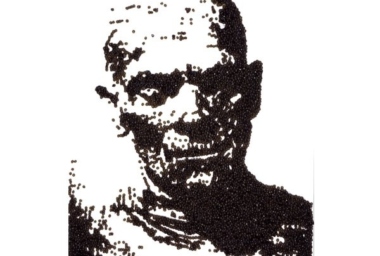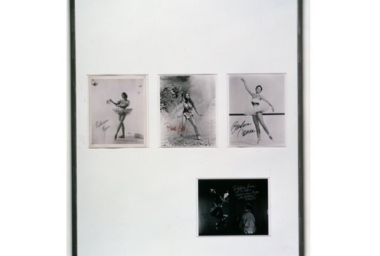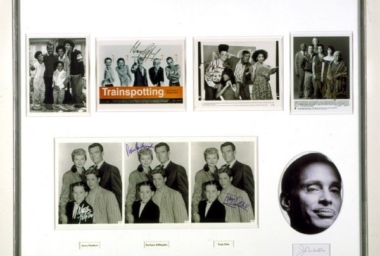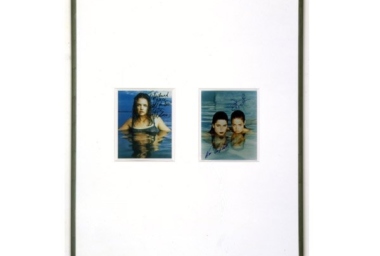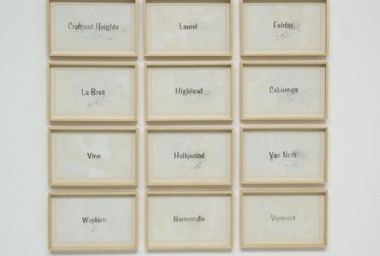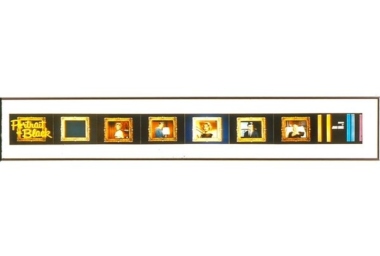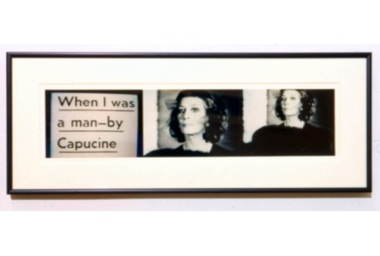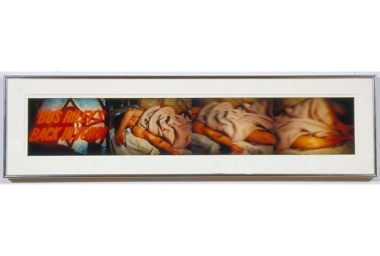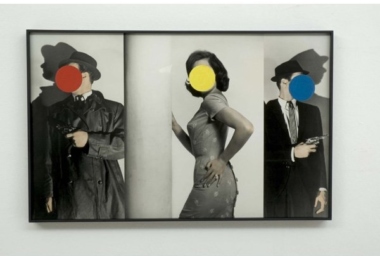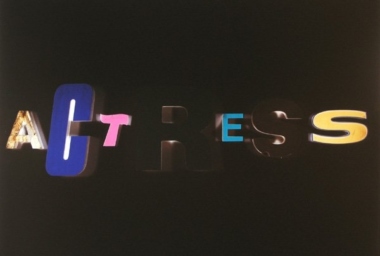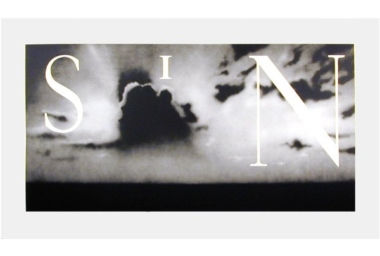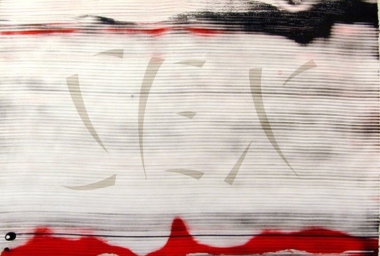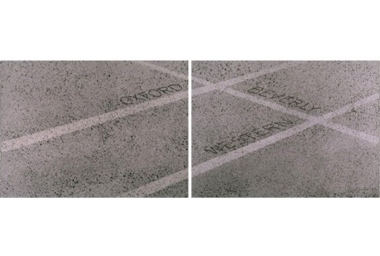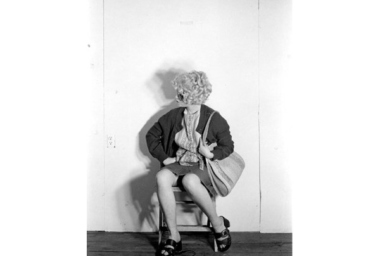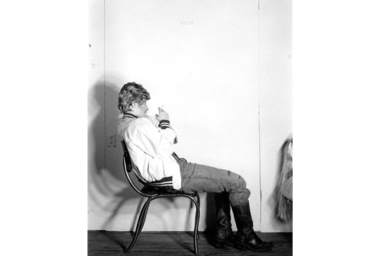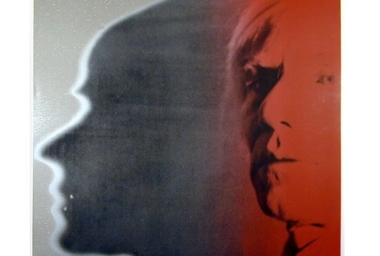Hollywood Boulevard
Jan 19 – Mar 11, 2006
Galeria Fortes Vilaça
John Baldessari | Douglas Gordon | Vik Muniz | Jack Pierson | Richard Prince | Ed Rusha | Julião Sarmento | Cindy Sherman | Francesco Vezzoli | Andy Warhol | John Waters
Curated by Alexandre Melo
Galeria Fortes Vilaça is pleased to present the group show Hollywood Boulevard, which brings together paintings, photographs, and engravings by a truly star team from the international contemporary scene.
Within the ample arena of subjects related to Hollywood, the Portuguese curator Alexandre Melo has indicated several themes, of specific interest to him, which oriented his choice of works: the models of beauty, "glamour," and desire as elaborated and propagated by Hollywood; the star system or the fame industry; the insertion of a cinematographic grammar of image production into the visual arts, and a mythical geography in which Hollywood appears as a "paradise invented, lost, re-encountered, or falsified."
The two photographs by Cindy Sherman, Untitled from the series Bus Riders, 1975/2005, show the artist herself, dressed like common characters who wait for a bus. The characterization as well as the characters' pose suggest a hybrid of fiction and reality. It is as if the images of people on the street already reflect an aesthetic from film and television, as if in the 1970's the artist were already trying to portray a kind of mediatized reality.
Jack Pierson, John Baldessari, and John Waters explore the development of cinematographic grammar in the visual arts. Pierson is represented by two works. Actress, 2000 is a photo in which each letter of the word actress appears written in a different typology. In the painting Stardust #2, 2001 a cinematographic close-up is treated at the limit between abstraction and figuration. In Sex and Crime, 1996 Baldessari makes abstract interventions on figures of detectives and pretty girls from film noir. The filmmaker and artist John Waters has made a compilation of iconic photograms selected from various sources, starting with the unending stock of Hollywood images – a mine of images – which constitutes the richest and vastest lode for supplying the human imagination in the last century.
Hollywood's mythical geography appears in the works of Ed Ruscha, the U.S. representative at the last Venice Biennial, and in those of the Portuguese artist Julião Sarmento. Both Ruscha and Sarmento use the names of Hollywood streets as a formal element in their works.
The work of Andy Warhol is practically inseparable from his public persona. Warhol discovered, thematized, and took advantage of the star system. The choice of one of his self-portraits points in this direction. Richard Price also appropriates Hollywood's publicity machine by using autographed photographs of actresses such as Katie Holmes and Neve Campbell in his works.
Other highlights of the show are Vik Muniz's photographs – a Bette Davis made of diamonds and a mummy of Boris Karloff made of caviar – and an embroidery by the Italian Francesco Vezzoli, in which images of Sônia Braga and Amália Rodrigues appear on opposing sides of the same image.
Hollywood Boulevard, São Paulo, 2005
by Alexandre Melo
1. The aura of Hollywood consists in the symbolic capital that corresponds to the power to produce, conserve, and reproduce a stock of images-a mine of images-that constitutes the richest and vastest source of supply for the human imagination in the last century. The Hollywood mode of producing images contributed, more than any other source, to define and change the way, unprecedented in the history of the human race, in which the 20th Century's children and citizens constructed their systems for perceiving reality and for structuring desire and imagination. When we speak of Hollywood we speak of a mode of producing images which-starting with the classic model of American cinema and through its expansion and permanent revolution, determined by means of its absorption and transformation by a televised language approaching universalization-is the raw material for the fundamental cultural mutations designated by expressions such as the society of the spectacle, the empire of images, the triumph of the "star system," the generalization of imagetic mediatization of human relations, or even the ontological indissociability of reality and fiction, introduced and supported by the new tele-visual regime of the life of images.
2. The works selected for the exhibition "Hollywood Boulevard" relate, in a more or less direct manner, with that which Hollywood invokes as either myth or reality.
Some of the most relevant topics for approaching the exhibited works as a whole include:
– The models of beauty, glamour, and desire elaborated and propagated by Hollywood and the ways in which they influence the social experience of beauty and sexuality, also creating distancing and critical reactions, which are sometimes radical.
– The "star system" and the idea of the "star" which, banalized through television and pop music, has become an obsession in contemporary social life.
– A new grammar of producing images which, having been invented by and for cinema, today is an important reference for all the other arts including, explicitly, fine art.
– A mythical geography in which Hollywood or Los Angeles in general sometimes stands for a utopian place of a Paradise invented, lost, rediscovered, or falsified.
3. The word "Boulevard" that completes the exhibition's title, beyond its literal topological meaning-an avenue in Los Angeles, with peculiar characteristics-introduces a nostalgic dimension that can be related with a geographic and chronological distance: an echo of Europe, of 19th Century Paris, the "flâneur" of Baudelaire and Benjamin. The expression of a nostalgia which, having begun as a nostalgia for the world before cinema, today is beginning to be a nostalgia for the world of cinema's early days.


